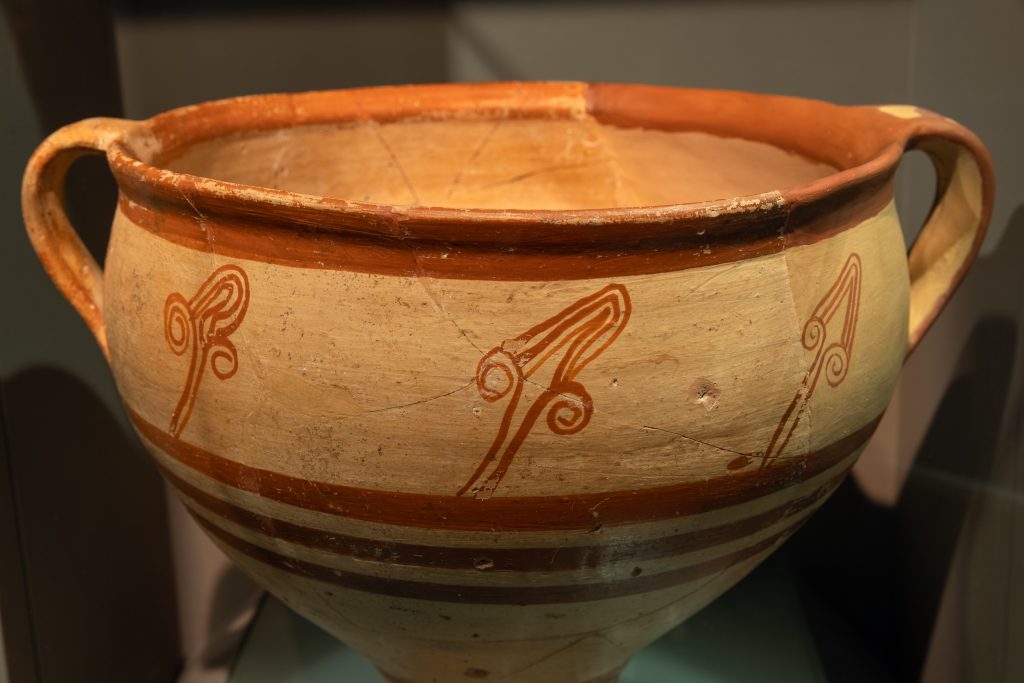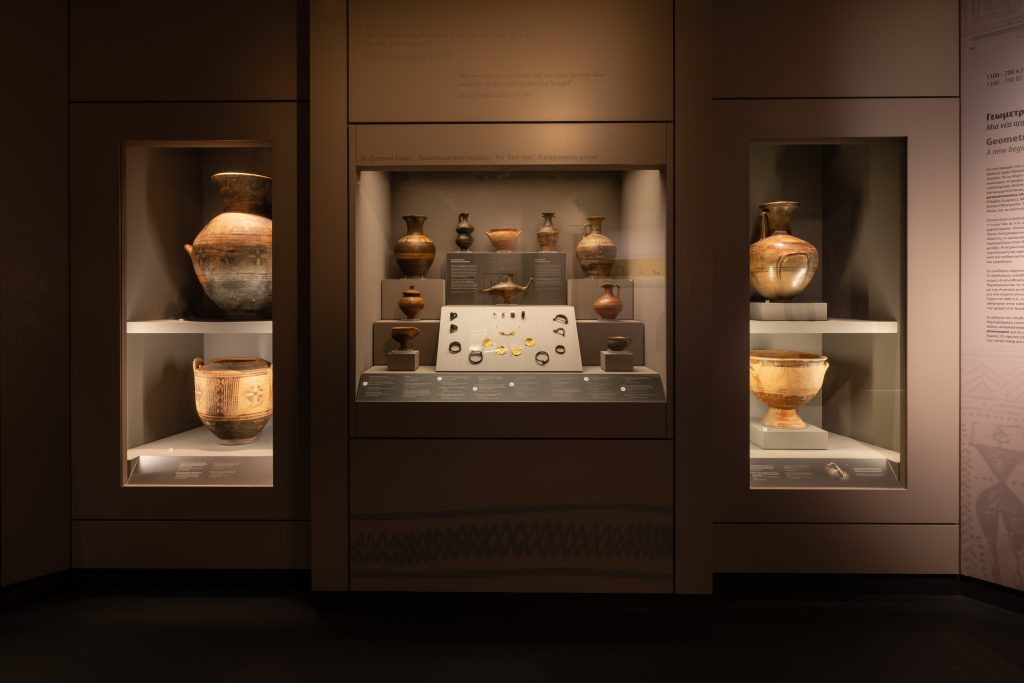Stirrup-jar
OBJECT NARRATIVES
DESCRIPTION
The stirrup-jar was one of the most common types of clay vases of the Mycenaean period. It takes its name from the presence of a pouring spout and a false neck at the centre of the terracotta vessel joined to the shoulders by handles like a “stirrup”.
This type comes from the workshops of Minoan Crete in the period between 1700 and 1450 BC, while from the first decades of the 15th century BC the form was also produced on the mainland.
These vessels were mainly associated with the use of aromatic oils, the preparation of which constituted one of the most important crafts of the Mycenaean palaces.
MORE

ANCIENT GREEK ART
Mycenaean Civilisation

THE CYCLADIC PODCAST
The rise, the decline and the characteristics of the Mycenaean civilization

ANCIENT GREEK ART